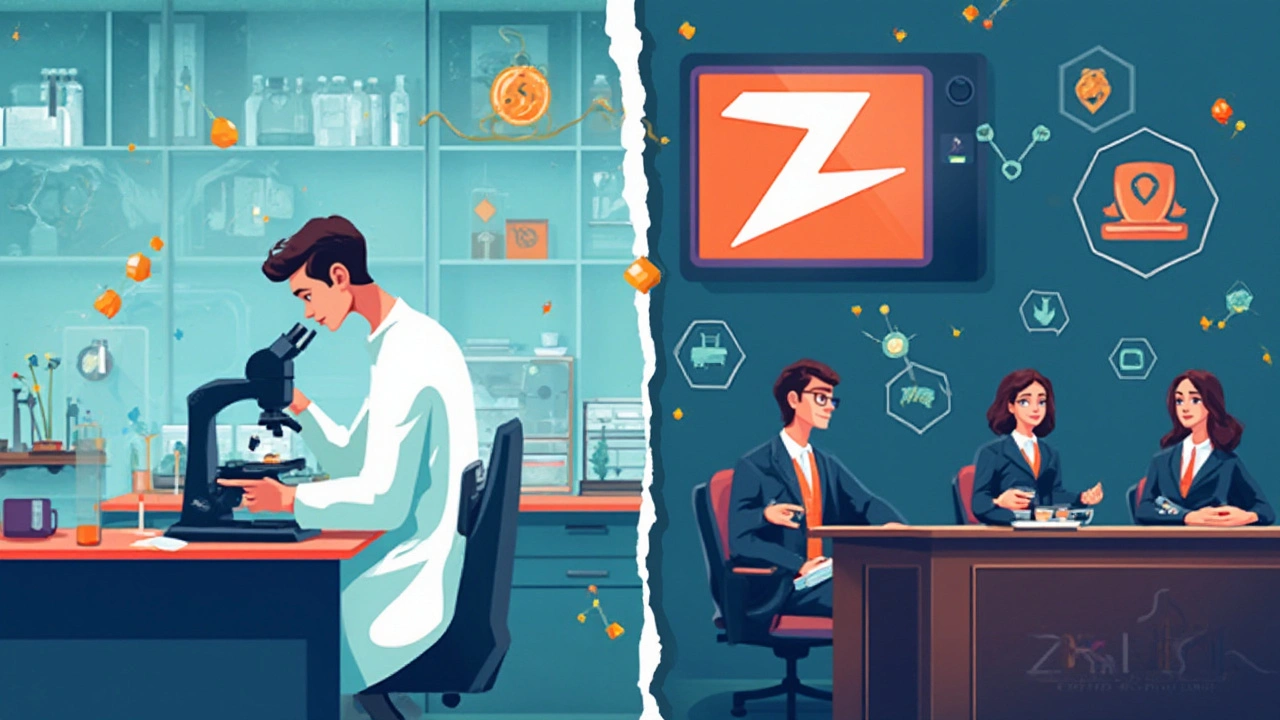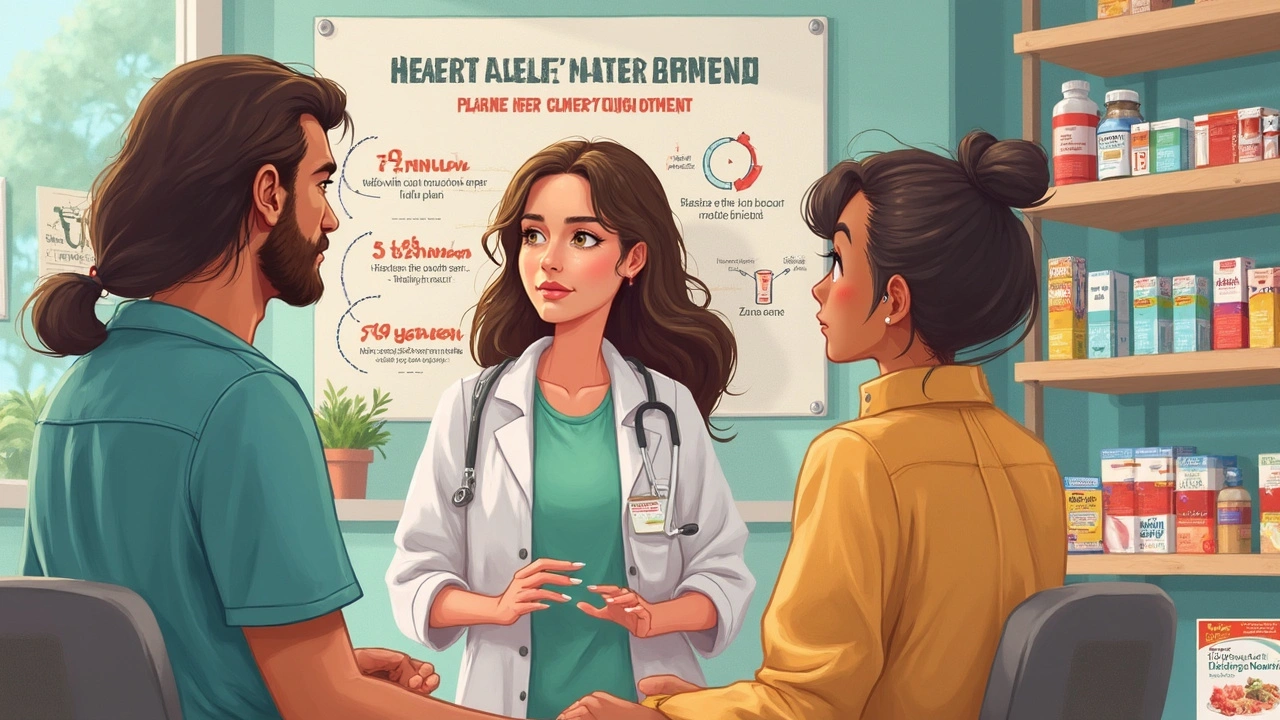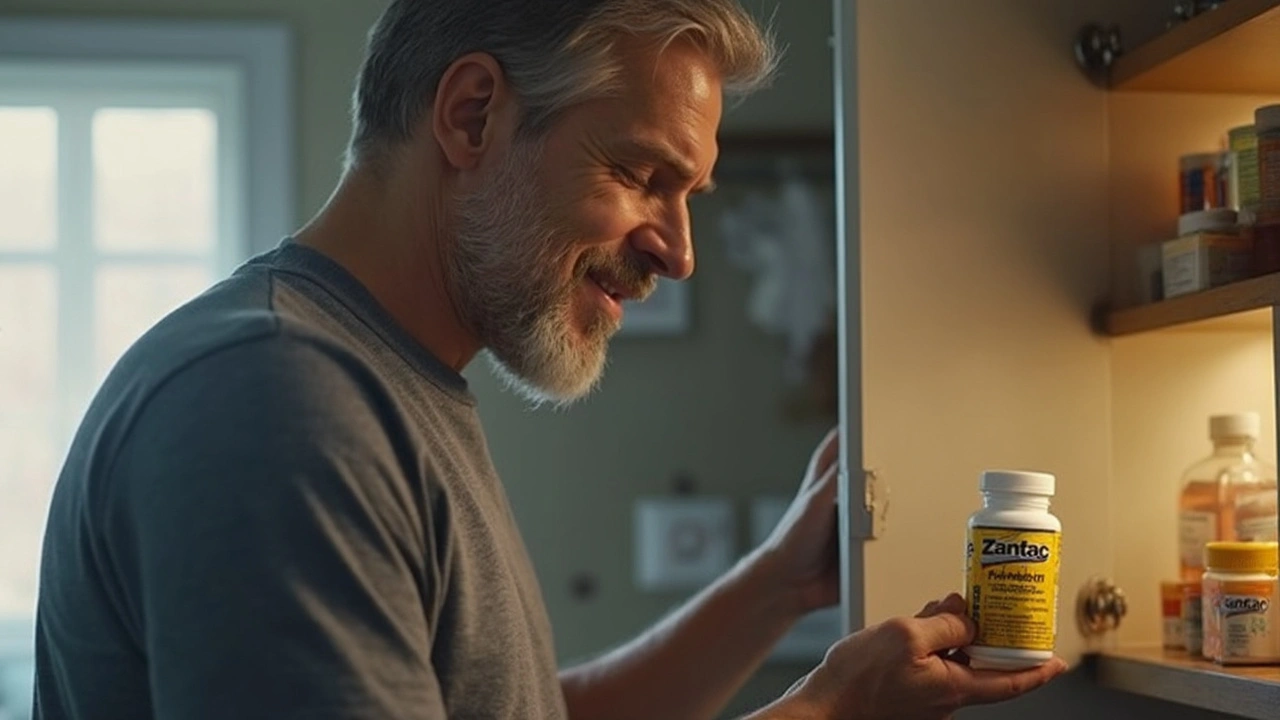Zantac used to be something you'd find in most households. Got heartburn after a big dinner? Zantac was the fix. Even doctors trusted it. But then, almost overnight, Zantac went from trusted remedy to national news, all thanks to a chemical called NDMA. Suddenly, people were tossing their bottles in the trash, and the word 'recall' made us all second-guess our medicine cabinets. It wasn't just a little scare. The FDA got involved, stores pulled products, and law firms rushed to air commercials about lawsuits. How did a popular drug turn into one of the biggest pharmaceutical controversies of the decade? And what does it mean for those of us who just want some relief from spicy-taco regret? Let's break down everything you need to know in 2025, so you aren't stuck with out-of-date advice—or worse, risky meds.
The History and Downfall of Zantac
Zantac’s story started back in the 1980s. Its generic name is ranitidine, and it was a breakthrough for heartburn relief—way faster than antacids and with longer-lasting results. By the late '80s, Zantac was the world’s best-selling prescription drug. People loved that it knocked out acid reflux and eased ulcers. Fast forward to the 2000s, and you could buy it over-the-counter. Millions of people did, turning Zantac into a household staple. It all seemed safe—until scientists discovered something hiding in the molecule.
By 2019, the alarm bells rang. Independent labs started finding high levels of N-Nitrosodimethylamine (NDMA) in Zantac and its generics. This wasn’t some minor impurity. NDMA is a compound the World Health Organization calls a ‘probable human carcinogen,’ meaning it can probably cause cancer if you get enough of it over time. The FDA and Health Canada launched their own tests, and companies across the world yanked the drug off shelves. Lawsuits poured in, with people claiming their cancer was tied to Zantac use. The sheer number of lawsuits—over 100,000 as of mid-2024—put Zantac in the same league as tobacco or asbestos in terms of legal scrutiny.
"Our studies found that ranitidine could form NDMA in the body or during storage, especially at higher temperatures," said Dr. Janet Woodcock, former acting commissioner of the FDA.That’s where the panic really started: not just in the lab, but in your medicine drawer, especially if you lived somewhere hot.
Big pharmacy chains like CVS, Walgreens, and Walmart pulled all products containing ranitidine. The FDA officially advised everyone to stop using Zantac or its generics, and that’s when patients scrambled to their doctors for new options. The drama made the news for weeks. While not every person who took Zantac will develop cancer, the risk—however small—was real enough to shake public trust in over-the-counter meds. What made things more confusing was that not all ranitidine had dangerous levels, but it could spike under certain conditions, like heat (how many of us keep medicine in the car or bathroom?). Zantac’s fall from grace became a textbook example of how something trusted can spiral when science moves faster than regulation and oversight.
Pharmaceutical companies tried to defend their formula, insisting that Zantac was safe if stored properly. But as more data rolled in, no one could guarantee that a pill made months ago and shipped across a few summer states would be NDMA-free. By April 2020, the FDA told everyone to stop using and return whatever Zantac they had. A sea of legal claims followed, with most focusing on bladder, stomach, and esophageal cancers—types linked to NDMA exposure. To this day, plaintiffs argue about what drug companies knew and when. In 2023, GSK and Sanofi (two drug giants involved with Zantac) faced major headlines as they settled some cases but still fought big ones in court. The Zantac saga isn’t just about one brand or pill—it’s a lesson about how much faith we put in the products we grab at the corner store.

Understanding the Risks and the Science Behind Zantac
So, what exactly went wrong in the chemistry of Zantac? Ranitidine, its main ingredient, seemed safe for decades. The trouble was in how the molecule breaks down. Under certain conditions—mainly heat, humidity, or when stored for a while—ranitidine can react and form NDMA. This means you could buy a perfectly fine bottle at the store, but leave it in your glove box on a summer day and wind up with something much riskier. Here’s the wild part: even the manufacturing process could trigger this reaction, so older stock sat on shelves with invisible danger building up inside.
Researchers found that NDMA amounts sometimes soared well above what regulators considered 'safe.' For example, the FDA’s daily limit for NDMA is just 96 nanograms—a nanogram is one-billionth of a gram. Some Zantac samples tested over 3,000,000 nanograms per tablet after exposure to high temperatures. That’s not an imaginary bump; it’s a full-on chemical explosion. There’s no clear level of NDMA where cancer becomes inevitable, but the risk rises with both the dose and time exposed. To put it into perspective, NDMA was once used to induce liver tumors in laboratory animals. You really don’t want it in what’s supposed to be a safe heartburn tablet.
| Sample | NDMA (ng/tablet) | FDA Acceptable Limit |
|---|---|---|
| Zantac, unexposed to heat | 200-500 | 96 |
| Zantac, after heat exposure | 3,000,000+ | 96 |
| Generic ranitidine | varies (up to 2,500,000) | 96 |
The fallout didn’t just hit Zantac. People began to worry about every medicine in the bathroom. Almost every major pharmacy reported a rush of calls about heartburn remedies, and gastroenterologists had to field a barrage of panicked questions. Doctors stressed that the actual risk of developing cancer from a few months of Zantac was low, but they couldn’t say it was zero, especially with long-term use. The lawsuits changed how drugmakers handle quality control and storage. NDMA testing became much tougher for future products, not just for ranitidine. That’s why meds like famotidine (Pepcid), lansoprazole (Prevacid), and omeprazole (Prilosec) became the new go-tos. These drugs work differently and haven’t shown the same risk of making NDMA, so if you used to rely on Zantac, you probably got switched to something in that group.
The human stories behind the data are sobering. Some people who took ranitidine for decades now watch their health closely. There are heartbreaking cases: people blaming years of faithful use for later cancer diagnoses—and that’s why the story is far from settled in courtrooms. Science keeps evolving, but right now, the verdict for Zantac is clear. The risks outweighed the benefits, at least with current manufacturing and storage methods. That’s why it’s off shelves in the U.S., Canada, and throughout Europe for the foreseeable future. If you still have an old bottle at home—don’t take it. Not worth the gamble.

Smart Heartburn Relief: Safer Alternatives and Actionable Tips
No one wants to play chemistry roulette when it comes to their health. If you’re still reaching for heartburn meds or worried about past use of Zantac, there’s good news: you’ve got options, and they actually work. The most common switch is to famotidine (brand name Pepcid), which is in the same family as Zantac but doesn’t have the NDMA risk. It’s been tested again and again under tough storage conditions and passes every time. For longer or more stubborn reflux, doctors recommend proton pump inhibitors (PPIs) like omeprazole or lansoprazole. These drugs knock out acid at its source and are considered very safe when used as recommended, though you don’t want to use them forever without medical advice (they can mess with how you absorb certain nutrients if you take them for years without a break).
- zantac alternatives: Go for famotidine (Pepcid), omeprazole (Prilosec), or lansoprazole (Prevacid). These are easy to find and don’t create NDMA. Just check with your doctor—no product is risk-free if used incorrectly.
- Lifestyle matters, too. Losing a few pounds if you’re overweight, cutting back on alcohol and caffeine, eating smaller meals, and not lying down right after eating all make a big difference with reflux.
- Know your triggers. For some, it’s coffee. For others, spicy food, tomato sauce, or fatty meals spark heartburn. Track your symptoms for a couple of weeks and you’ll spot a pattern. That makes it way easier to avoid the worst offenders.
- If you need meds often, or if you have pain that won’t go away, see a doctor. Not all heartburn is the same—sometimes it’s a signal for something more serious, like an ulcer or a heart issue.
- If you took Zantac in the past and are worried, ask your doctor if you need screening. Don’t panic—short-term, low-dose use has an extremely low risk. The higher risk came with years of daily use, and even then, the chance of cancer is still relatively small—but it’s always smart to get peace of mind.
- If you come across old Zantac pills, don’t flush them! Drug take-back events or your local pharmacy will help you dispose of them safely, so there’s no environmental impact.
Pharmacists and doctors are much more watchful about what gets on the shelf now. Storing medication correctly matters even more than before—avoid hot or humid places, stick to labeled expiration dates, and don’t use anything with damaged packaging. These lessons from the Zantac story changed the way pharmacies, regulators, and even customers act. The best tip? Stay informed, ask questions, and if something feels off with your medicine, don’t brush it aside. That is what makes the difference between trouble and trust when it comes to everyday health fixes.


Lynnett Winget
May 30, 2025 AT 00:17If you keep an old bottle of Zantac tucked away, think of it as a ticking time‑bomb of chemistry that could turn a casual heartburn fix into a risky gamble. A splash of color in your health routine is great, but swapping it for Pepcid or a PPI keeps the palette bright without the NDMA shadows. Remember, keeping meds out of the heat of a car or a steamy bathroom is a simple trick that saves you from hidden danger. Stay curious, stay safe, and let your stomach thank you.
Amy Hamilton
June 8, 2025 AT 19:26One key takeaway from the Zantac saga is that regulatory vigilance must keep pace with scientific discovery.
The formation of NDMA under routine storage conditions reveals how a seemingly stable molecule can become a carcinogen with a simple shift in temperature.
This chemical reality forces both manufacturers and consumers to reconsider the complacency that once surrounded over‑the‑counter remedies.
In practice, pharmacists now label ranitidine products with explicit storage warnings, a step that was absent during the early years of its popularity.
Doctors, meanwhile, have updated their prescribing habits, favoring alternatives that lack the NDMA liability.
The legal landscape also transformed, as thousands of plaintiffs pursued claims that reshaped pharmaceutical liability standards.
Courts have begun to accept that even low‑level exposure, when chronic, may contribute to cancer risk, setting a precedent for future contaminant cases.
Researchers continue to refine analytical methods, detecting NDMA at parts‑per‑billion levels that were invisible a decade ago.
This heightened sensitivity benefits public health, yet it also raises the bar for drug approval processes worldwide.
For patients, the practical advice remains straightforward: discard any ranitidine product past its expiration date and avoid storing it in hot environments.
Switching to famotidine or a proton pump inhibitor offers comparable symptom relief without the NDMA concern.
Lifestyle modifications, such as eating smaller meals and reducing trigger foods, further reduce reliance on medication.
The broader lesson is that vigilance, education, and open communication between clinicians and patients can mitigate hidden hazards.
As the industry adapts, we can anticipate more robust quality‑control protocols that prevent similar scandals.
Ultimately, the Zantac episode underscores the importance of staying informed and proactive about the medicines we entrust with our health.
Lewis Lambert
June 18, 2025 AT 15:33Watching the Zantac saga unfold feels like a stage drama where the hidden antagonist is a microscopic chemical, and the scientists are the unsung heroes rushing to rewrite the script. The intensity of the public’s reaction echoes the clash of old trust versus new evidence, and it reminds us that even everyday pills can harbor dramatic twists. By sharing these insights, we help each other stay prepared for the next unexpected act.
Tamara de Vries
June 28, 2025 AT 11:40If you still hoLd an old bottle of Zantac you should definately check the expiration date before you think about using it again. Its easy to forget that heat and humidity can turn a simple pill into a risky surprise, so keep it in a cool, dry place or toss it out.
Jordan Schwartz
July 8, 2025 AT 07:46It’s good to remember that most people who used Zantac for a short period face a very low risk, and partnering with your doctor to choose a safe alternative can bring peace of mind. Keeping a symptom diary can also help you and your healthcare provider gauge how effective the new medication is.
Nitin Chauhan
July 18, 2025 AT 03:53Store your meds in a cool, dry place to avoid chemical surprises.
Angelo Truglio
July 28, 2025 AT 00:00Seriously, everyone-listen up!-the lesson here isn’t just about Zantac; it’s a warning bell that says we must demand stringent testing, relentless oversight, and crystal‑clear labeling for every over‑the‑counter product! If we ignore the warning signs, we’re signing up for more scandals, more lawsuits, and more distrust in the healthcare system!!!
Dawn Midnight
August 6, 2025 AT 20:06The previous comment contains several exclamation marks that could be reduced for a clearer, more professional tone.